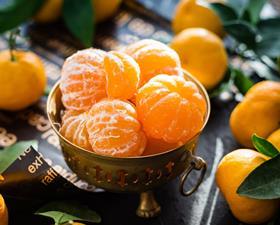
A troubled South African supply season and retail inflation has led to a rather mixed performance for citrus sales, with suppliers looking forward to the traditional boost during the festive period.
Value and volume rose by 2.4 and 3.1 per cent respectively over the last 52 weeks, according to Kantar figures, driven primarily by an increase in shopper frequency and a 0.7 per cent rise in penetration. Supply has now switched from southern to northern hemisphere sources in Spain, as well as Turkey, Egypt and Morocco, with a reduced forecast for Spanish satsumas and clementine crops leading to expectations that these varieties will finish slightly earlier.
“Citrus sales are gradually improving after what has been a steady summer,” says commercial director at Fesa UK, Sisco Tello. “We have now finished with southern hemisphere fruit and are in full flow with Spanish easy peelers, lemons, oranges and shortly grapefruit. Promotional activity is a key driver for sales and this tends to be more prevalent during the autumn and winter months.” The crop forecast for the Spanish season shows a decrease of up to 20 per cent year on year, which has resulted in higher price expectations, adds Tello.
Matt Warren of AMT Fruit agrees that sales have been slightly reduced over the past few months. “While value remains positive, volume is slightly back, so it is a slight inflation driving the growth,” he explains. It has been a difficult year for product from South Africa, says Warren, adding that droughts in the country have meant it hasn’t been a vintage year on quality. “Navel orange volume was particularly affected from South Africa; the Citrus Growers Association says volume for the total year was 21.1 million cartons versus 26.2m for the year before.”
While overall citrus sales figures are positive according to Kantar, Jo Mumford, of importer Chingford Fruit, reports that a minor increase in shoppers entering the category has not offset the decline in volume sales, especially in the last quarter. “The overall citrus market is struggling as shoppers move their spend elsewhere, largely to stonefruit and grape,” she says. “In the latest quarter spend has declined by 5.2 per cent (volume down 2.3 per cent) largely on the back of price per kg going down in citrus, which is having a direct impact on the market weakening in the latest few periods. EDLP is the main driver to impact the citrus category performance.”
Heading into winter, Mumford expects better performances in the category as retailers begin to develop their citrus offer, the seasonal switchover is fully implemented and the shopper mindset turns toward seasonal categories.
Easy peelers remain the biggest contributor in citrus, while limes are the strongest performer in growth terms (+6.7 per cent), and a spokesperson for Allfresch Group says there is currently very strong demand due to low availability. “Compared to last year the market is a lot shorter [on limes]. Citrus in general seems to have a reasonable demand – up a bit on last year,” the spokesperson says. Allfresch will be sourcing winter season citrus from Turkey, Egypt and Morocco, while limes will be imported from Mexico, Brazil and Peru.
Egypt continues to grow as a citrus supplier to the UK, with investments in planting and production beginning to worry some Spanish suppliers. Egyptian exporter Sama Trade’s director of sales Sophie Hassan says: “This year we’re investing in more plantings and we are building our own packhouse as we prepare to export more containers every year.
“We export 5,000 tonnes per season and we prefer the Asian market. But also we export to Europe, Africa and the Middle East. Our next step is America, the UK and Australia.”
Consistent varietal development and new suppliers coming on stream should secure future sales growth in the UK citrus market, but retail pressures are by no means over and continue to require careful navigation.



